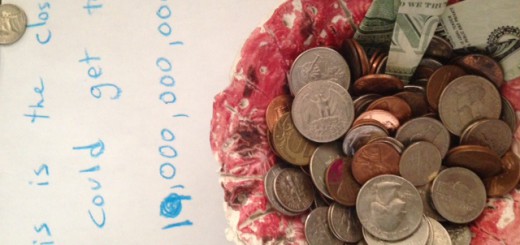Made you look. Kidding, I seriously have a thought on this. It’s sadly not from personal experience, but from seeing successes that followed a certain set of steps.
There will be a limited amount of technical content in this post, but don’t be scared off.
Everyone has an idea for some product or service everyone needs, but the simple fact of the matter is it’s not easy to engineer your amazing idea, promote it and get people to notice and pay you. So let’s deconstruct the plan most of us have in our heads for how businesses come to be, and see how to change that to maximize the opportunities for success. I think that’s the definition of “Growth Hacking,” but not super important right now.
To maximize the possibility for this working we have to be pragmatic. That means this isn’t your baby. For me I have actual babies, and I’d like to feed them, so if any random stranger offered me enough cash for a business of mine, I’d take it and walk slowly away, not even looking at the explosion behind me.  Because I know who my babies actually are, and because I’m cool like that.
Because I know who my babies actually are, and because I’m cool like that.
Next, don’t worry excessively about having everything planned out. Get something up and out there and see if people like it. Listen to them and do what they say. Not only will this save you from building junk no one wants, but it will keep you from worrying too much about making money. Seems counterintuitive, I know. But here’s how to walk away with that briefcase of cash – get acquired. The timeline to launch something and generate revenue from ads, purchases and subscriptions can be rocky, to say the least. People actually call it the burn rate and liken it to launching a rocket into space. In case you weren’t aware, the success rate of launching rockets into space isn’t high, and the cost is enormous.
If you work towards the goal of being acquired your timeline between start and cash out can be a few years, or if you’re super fortunate, even less. I used to talk about AOL acquiring ICQ when it didn’t even generate revenue, but that’s so Bubble 1.0. Twitter acquired Periscope before Periscope even had a public app, never mind a revenue stream. If you sell your business when the ink is still drying on the napkin you dream it up on, and you don’t have to get messy actually making anything I call you clever.
To make it to cashing in as fast as possible you need to keep things simple. Low overhead. We’re really just talking about website and app only or driven businesses in this post. While there are other ways of making a living there aren’t as many bubble making unicorns about them.
Here’s where we’ll get a little technical, so buckle up. You need to get the simplest form of what you are doing up fast and inexpensively. You need to listen, modify, add and take away. To do this, you need to build on existing concepts. And you need to use the tools available to make this easy to do.
Existing concepts means baby steps forward in user experience. Giant leaps mean you have to explain everything to potential customers. Giant leaps are, of course, appealing, but just be aware how difficult it will be to get people to use what you make if they don’t understand it.
Using available tools means rapid application development with content management tools, toolsets and APIs. This means not all code is owned by you. It’s not going to be the fastest code. Remember how apps like Meerkat only worked on iOS (iPhones & iPads) initially? If you’re not limited by the need to make a perfect app that works everywhere, works perfectly and is fast, you’ll get out there and get people interested and involved.
To better understand what I’m saying, look at Waze, recently acquired by Google for $966 million. It’s essentially a cooler version of Google Maps. It can tell you where police are waiting to find you, and better optimize your route. As cool as it may be, and however it may have been build, the truth is, it could have been literally built on top of Google Maps using it’s APIs. This is not a burst in originality and innovation, but an incremental step forward. Perhaps Google even had plans to do these things themselves. So without an amazing and new direction, Waze was bought for almost a billion dollars.
If you can find existing technology that is missing some functionality or capability you think it really needs, and can build that tech – not even by recreating it all, but just building on top of existing sites and apps, you’ll have an audience of users that will readily understand what you’re making, and a likely path to quickly cash out.



